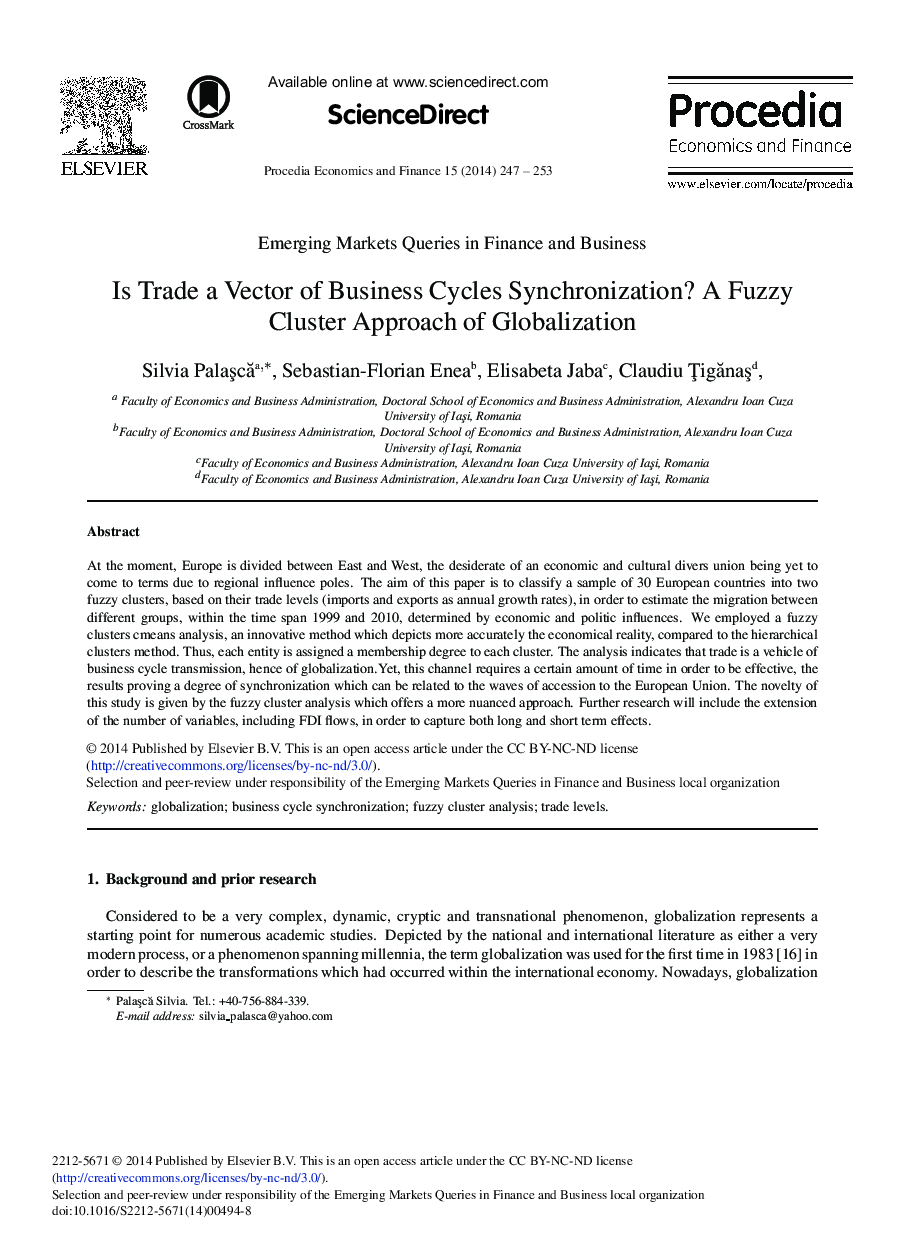| Article ID | Journal | Published Year | Pages | File Type |
|---|---|---|---|---|
| 983003 | Procedia Economics and Finance | 2014 | 7 Pages |
At the moment, Europe is divided between East and West, the desiderate of an economic and cultural divers union being yet to come to terms due to regional influence poles. The aim of this paper is to classify a sample of 30 European countries into two fuzzy clusters, based on their trade levels (imports and exports as annual growth rates), in order to estimate the migration between different groups, within the time span 1999 and 2010, determined by economic and politic influences. We employed a fuzzy clusters cmeans analysis, an innovative method which depicts more accurately the economical reality, compared to the hierarchical clusters method. Thus, each entity is assigned a membership degree to each cluster. The analysis indicates that trade is a vehicle of business cycle transmission, hence of globalization.Yet, this channel requires a certain amount of time in order to be effective, the results proving a degree of synchronization which can be related to the waves of accession to the European Union. The novelty of this study is given by the fuzzy cluster analysis which offers a more nuanced approach. Further research will include the extension of the number of variables, including FDI flows, in order to capture both long and short term effects.
